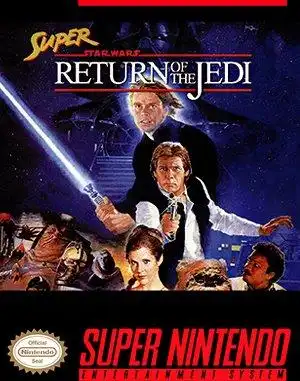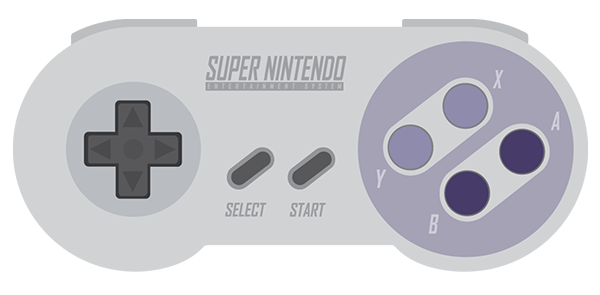The final chapter. The climactic battle for the galaxy. For many retro gamers in the '90s, experiencing the conclusion of the original Star Wars saga meant popping the Super Star Wars: Return of the Jedi cartridge into their Super Nintendo. As the third and arguably most refined entry in the challenging trilogy, this game brought the Endor forests, Jabba's palace, and the second Death Star to life in vibrant 16-bit glory. But how does this epic conclusion hold up today? Let's take a trip back to a galaxy far, far away... on the SNES.
The Grand Finale: Wrapping Up the Super Star Wars Saga
Released in 1994, Super Star Wars: Return of the Jedi was tasked with closing out the popular, albeit notoriously difficult, action-platformer series on the SNES. Following the events of Super Star Wars and Super Empire Strikes Back, this game plunges you directly into the final film's storyline, from rescuing Han Solo on Tatooine to the desperate struggle against the Emperor and the Death Star.
While still taking significant liberties with the source material (expect more random alien critters than you remember in the movie), RotJ generally follows the cinematic beats. It features around 20 levels, leading you through iconic locations and culminating in boss fights against major villains like Jabba the Hutt, Darth Vader, and Emperor Palpatine. It aimed to refine the formula established by its predecessors, promising a smoother, more enjoyable ride – a promise it largely delivered on, though not without its quirks.
Stepping into the Boots (and Fur!) of Heroes
One of the biggest draws of Super Star Wars: Return of the Jedi was its expanded roster of playable characters, offering more variety than ever before:
- Luke Skywalker: Wielding his green lightsaber, Luke is more capable this time around. He focuses solely on saber combat but gains useful Force powers and, crucially, the ability to block blaster fire – a game-changer!
- Han Solo: Your reliable blaster-slinging rogue. Han's gameplay remains similar, focusing on ranged combat, though his initial blaster power feels a bit weaker than in previous games.
- Chewbacca: The Wookiee powerhouse. Chewie brings his bowcaster to the fight, offering heavy firepower.
- Leia Organa: A welcome addition! Leia's abilities change depending on her outfit, offering different playstyles throughout the game, including a staff, a whip, and a blaster.
- Wicket W. Warrick: Everyone's favorite Ewok joins the fray! Wicket is surprisingly agile and uses a bow and arrow, proving that even small heroes can take down stormtroopers.
This increased character choice, often allowing you to pick your hero before a level, adds a layer of strategy and replayability. The characters feel reasonably balanced, and trying different paths with different heroes can alter the experience.
Gameplay remains primarily 2D side-scrolling action. You'll navigate treacherous platforms, blast countless enemies, and collect power-ups. The core mechanics are familiar to anyone who played the first two games, but with some key refinements.
More Than Just Running and Gunning: Vehicle and Special Stages
Like the other games in the trilogy, Super Star Wars: Return of the Jedi breaks up the platforming with special stages, often utilizing the SNES's Mode 7 capabilities.
- Jabba's Barge Jump: A relatively easy, almost puzzle-like sequence.
- Millennium Falcon Turret Battle: A surprisingly functional turret section that offers a different perspective.
- Speeder Bikes on Endor: Fast-paced Mode 7 segments that can be thrilling but also prone to frustrating collisions.
- The Final Death Star Escape: A section often criticized for being confusing and difficult to navigate under pressure.
While Mode 7 levels were cool for the era, they remain a mixed bag. They offer a visual spectacle but often suffer from finicky controls and collision detection compared to the main platforming stages.
The Notorious Difficulty: Easier Than ESB, Still a Challenge?
The Super Star Wars trilogy is infamous for its brutal difficulty, often compared to classic NES titles like Castlevania. Super Empire Strikes Back is widely considered the hardest. Super Star Wars: Return of the Jedi definitely dials things back a notch.
Improvements include:
- More frequent health and life pickups.
- Force healing for Luke.
- Collecting emblems for extra lives.
- Fewer relentlessly annoying enemies like the turrets from ESB.
This makes the game significantly more approachable and enjoyable for many players. However, don't mistake "easier than ESB" for "easy." RotJ still presents stiff challenges, particularly:
- Difficulty spikes in early levels.
- Large, sometimes confusing level layouts (looking at you, Jabba's Palace!).
- Overly long boss fights that test your endurance.
- The aforementioned frustrating final escape sequence.
It strikes a better balance, though, offering a rewarding challenge without the soul-crushing frustration of its immediate predecessor.
The Look and Sound: SNES Presentation
Visually, Super Star Wars: Return of the Jedi is a prime example of late SNES pixel art. Character sprites are detailed and well-animated, and the environments, particularly the varied locales like the lush Endor forests or the grimy depths of Jabba's palace, showcase impressive detail and color. While some asset reuse exists, the level design feels more distinct than in previous entries. As mentioned, the Mode 7 effects are less visually appealing today, appearing blocky and dated.
The audio, however, remains a highlight of the entire trilogy. The game features excellent 16-bit renditions of John Williams' iconic Star Wars score. The music perfectly captures the feel of the film, enhancing every blaster shot, lightsaber swing, and dramatic moment. Sound effects are crisp and satisfying, adding impact to the action.
Reliving the Adventure Today: Where to Play
Finding an original SNES cartridge of Super Star Wars: Return of the Jedi is always an option for purists, but prices can vary. For those looking for more accessible ways to play:
- Emulation: Playing via SNES emulators on PC or other devices is a popular method, requiring finding the appropriate ROM file (check local laws regarding ROM ownership).
- Virtual Console: The game was available on the Wii's Virtual Console, though this service is no longer directly accessible for new purchases.
- Modern Ports: While the first Super Star Wars game received an enhanced port on PS4 and Vita,
Super Star Wars: Return of the Jediitself has not seen a similar modern console release as of now.
Emulation remains the most common route for experiencing this classic today without original hardware.
Conclusion: A Fitting End?
Super Star Wars: Return of the Jedi is widely regarded as the best game in the SNES trilogy. It took the core action-platforming gameplay, expanded the character options, refined the mechanics (especially Luke's lightsaber!), and, crucially, toned down the difficulty from the brutal Empire Strikes Back.
While it still has moments of frustration, particularly in some vehicle segments and lengthy boss encounters, it offers a fun, challenging, and visually impressive 16-bit adaptation of the final film. For retro gamers and Star Wars fans looking to revisit this era, Super Star Wars: Return of the Jedi is a classic worth experiencing. It might not be a perfect game, but it's a memorable and fitting conclusion to a challenging, iconic trilogy.
FAQ
Q: Is Super Star Wars: Return of the Jedi the hardest game in the trilogy? A: No, Super Empire Strikes Back is generally considered the most difficult. Return of the Jedi is easier than ESB but still presents a significant challenge.
Q: Which characters can you play as in Return of the Jedi? A: You can play as Luke Skywalker, Han Solo, Chewbacca, Leia Organa, and Wicket the Ewok.
Q: Is Super Star Wars: Return of the Jedi available on PS4 or PS5? A: No, only the first Super Star Wars game received a modern enhanced port on PS4 and Vita. Return of the Jedi is not currently available on modern consoles.
Q: Does the game follow the movie plot exactly? A: It follows the general storyline and visits key locations, but takes significant liberties with enemy types and level design, adding many action sequences not present in the film.


